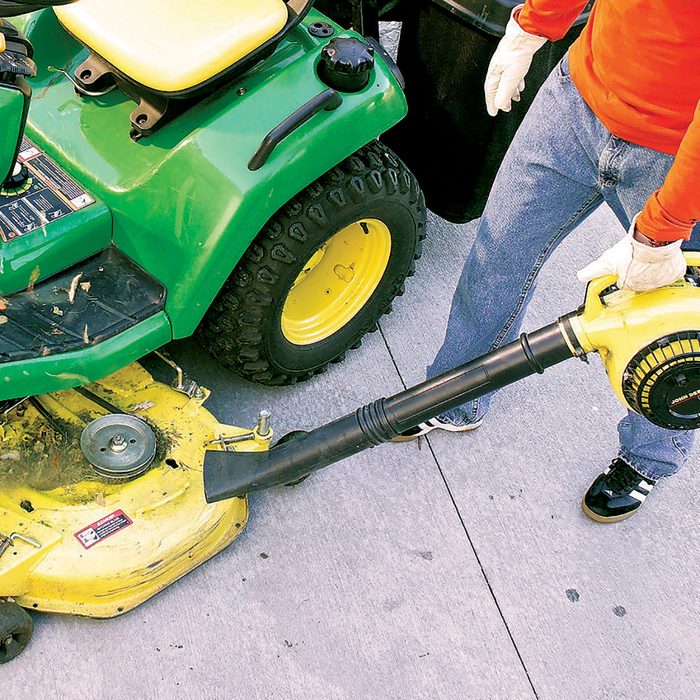
Blow the Mower Deck Clean
You might think that the belt guards on top of a mower deck protect the belts and pulleys from grass clippings, dirt and other debris. But just the opposite is true. The spinning belts and pulleys suck in debris and the guards trap it inside. Then it swirls around, grinding away at the pulley surfaces and tearing up your belts. Once a pulley wears, it will quickly chew up every new belt you put on. Avoiding having to purchase expensive belt and pulley replacements is easy; just blow the deck off with an air compressor or leaf blower after every third or fourth mowing.
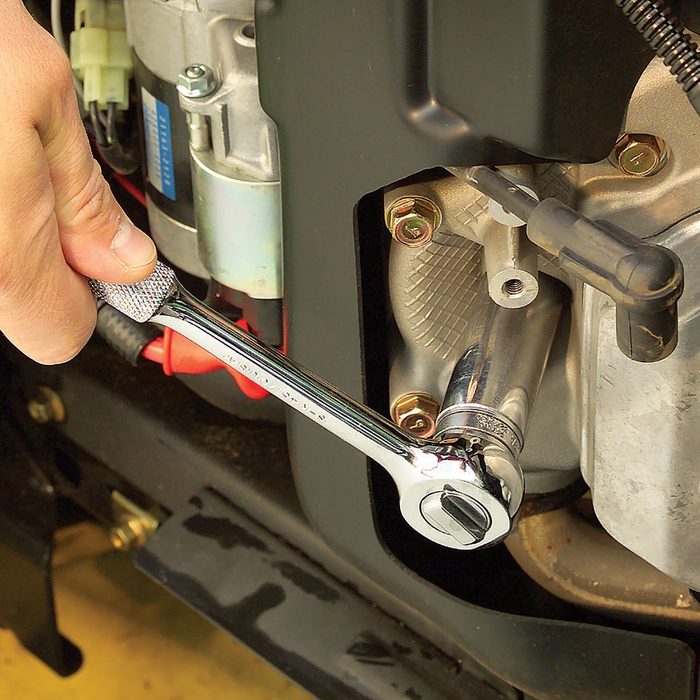
Spark Plug Pointers
Worn spark plugs cause a variety of problems, from hard starting and poor fuel economy to misfires and even engine damage. So replace them at the manufacturer’s recommended intervals. Changing plugs is a simple matter of unscrewing the old ones and screwing in new ones. But there are a few things to keep in mind when doing this lawn tractor maintenance project:
- Prevent debris from falling into the cylinder by brushing or blowing around the plug before you remove it. After removing the plug, wipe out the spark plug seat with a clean rag.
- If an old plug won’t turn, don’t resort to a bigger wrench. Brute force can cause major engine damage. Instead, use a spray that instantly cools the plug, causing the metal to contract and loosen.
- Don’t forget to set the gap of the new plugs before installing them. Check the manual for gap specifications and use a gap gauge (from any auto parts store).
- Use just the right amount of force to tighten the plugs. If you don’t have a torque wrench, follow this general rule: First, finger-tighten the plug. If the plug has a gasket, tighten it an additional half turn using a plug wrench. If the plug has a tapered seat, tighten it one additional one-sixteenth turn.
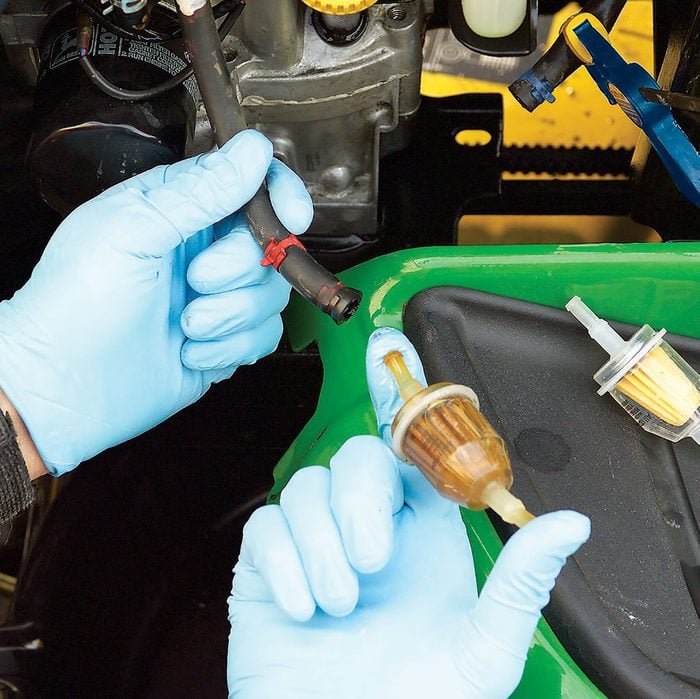
Replace the Fuel Filter
An old fuel filter can cause hard starting, poor fuel economy, and maybe even an expensive carburetor rebuild. Check your owner’s manual to find out how often to replace the filter on your specific model.
Replacing the fuel filter is fairly simple. But there’s a trick to doing it without getting drenched in gasoline:
- First, pinch the fuel line leading from the tank with a clamp.
- Then move the spring clamps away from the filter with pliers.
- Slip on a pair of nitrile gloves, tilt the inlet side of the filter up and remove the inlet hose.
- Drain the small amount of fuel from the fuel line into a drain pan. Then, plug the filter inlet with your thumb, tilt the entire filter down, and pull it out of the outlet hose. This technique keeps most of the fuel inside the filter, reducing spillage.
- Place the old fuel filter in the drain pan and install the new filter. Pay attention to the fuel flow direction arrows—the arrow must point toward the engine.
- Move the fuel line clamps back into place and remove the “pinch-off” clamp from the fuel line.
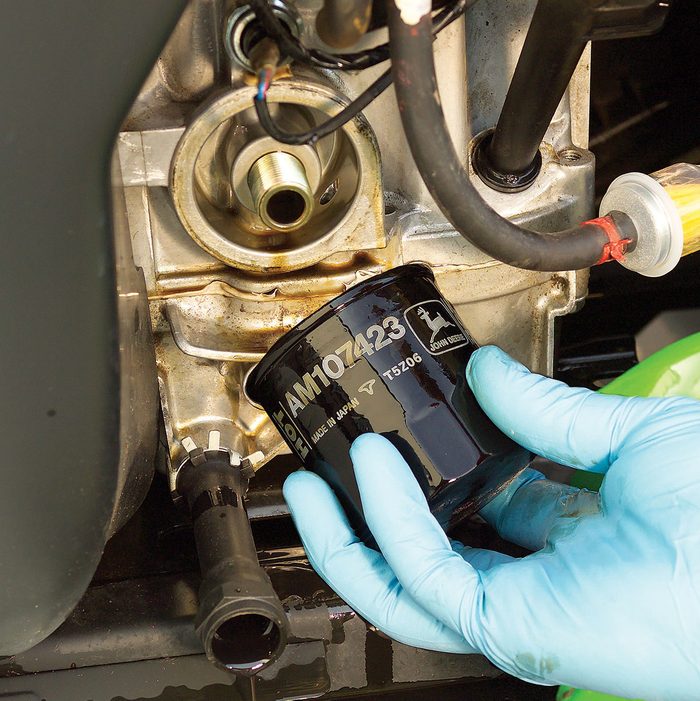
Choose the Right Oil
Just like your car, your lawn tractor needs regular oil changes. If your owner’s manual suggests a brand of oil, you can ignore that advice. But do pay attention to the recommended viscosity (such as 10W- 30) to find the best type of oil for your mower. If you use your tractor for snow removal, check the manual for a “winter weight” oil recommendation. Never, ever change the oil without also changing the oil filter. To prevent a buildup of gunk on the engine, wipe up any spilled oil. Bottle the old oil and take it to your nearest oil recycling center for disposal. Here are a few tips for tuning up your lawn mower to keep it running smoothly.
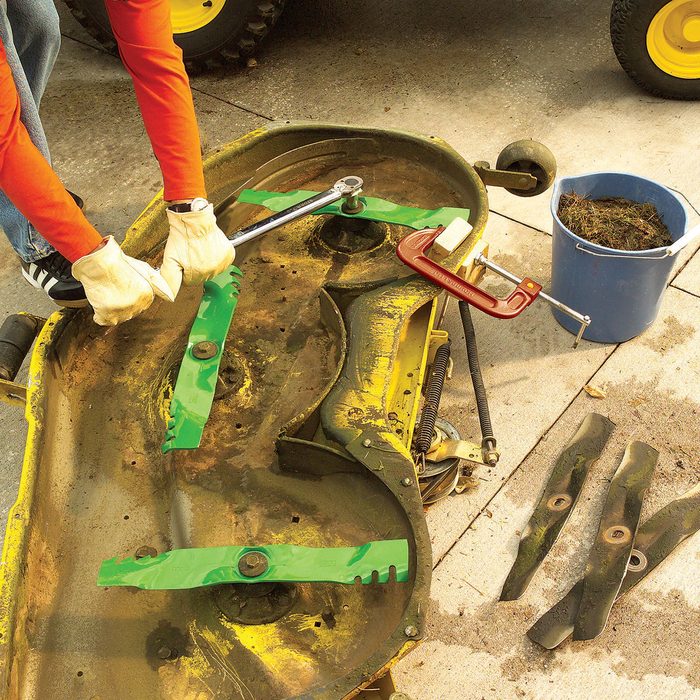
Blade-Changing Tips
Dull blades make the engine and belts work harder. They’re bad for your grass, too. Instead of slicing off the grass cleanly, they leave a torn edge that takes longer to heal.
- To change blades safely, remove the mower deck instead of working from underneath the tractor.
- If the deck has wheels, it tends to roll away as you try to flip it over. Lock one wheel with a clamp. Lay the deck on a couple of 2x4s to prevent damage to the pulleys.
- Lock the blades in place with a clamp and blocks. Don’t simply wedge a block between the blade and deck; the blade can break free and cut you.
- If you’re an Olympic weightlifter, you can loosen the blade bolts with an ordinary wrench or ratchet. If not, use a 25-in. breaker bar and six-point socket.
- Blade changes are less hassle if you keep a spare set handy. You can sharpen the dull ones in your spare time or take them in for professional sharpening. For sharpening tips, type “mower blade” in the search box above.
- Grass buildup on the underside of the deck reduces cutting efficiency. Scrape off big chunks with a flat pry bar and clean up the rest with a putty knife.
- To avoid over-tightening blade bolts, check the specs in the owner’s manual and use a torque wrench. Truth is, many tractor owners get by without a torque wrench. But if you ever break a bolt, remember that we warned you.
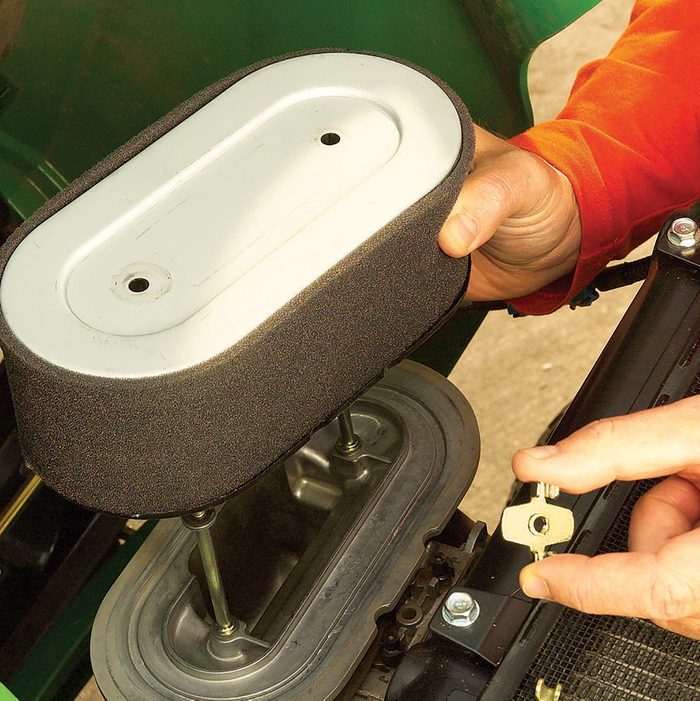
Clean the Air Filter Between Changes
You probably already know that it’s important to change the air filter as often as the owner’s manual recommends. But it’s also a good idea to clean the filter between changes. If your tractor has a foam prefilter, wash it with soap and water; never use a solvent or other cleaner. Blow out the pleated paper filter with a light blast from an air compressor. Keep in mind that this is not a substitute for regular filter changes. Even if the filter looks clean, replace it with a new one at recommended intervals.
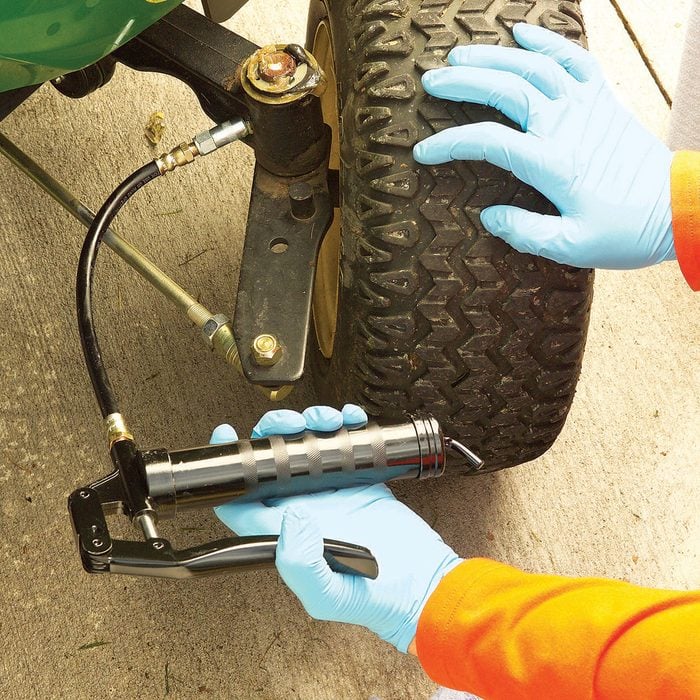
Grease Guidance
It isn’t exactly rocket science, but many tractor owners goof up greasing. The biggest mistake is using the wrong grease. The brand doesn’t matter, but use the type recommended by the manufacturer, whether it’s plain lithium, lithium with molybdenum disulfide, or polyurea. Grease every fitting every time you change the oil. Check your owner’s manual to locate them all. There may be grease fittings on your mower deck and other attachments too. A flexible hose makes reaching the fittings a lot easier.
The tire and pull the valve stem through the hole. Secure the valve stem with a spring clamp. Then pry the tire bead back onto the wheel and reinflate.
